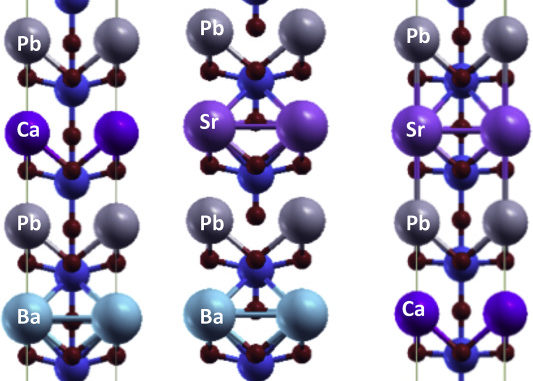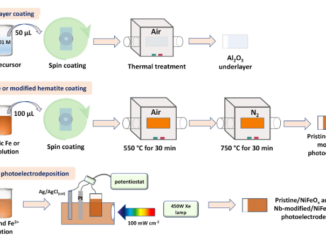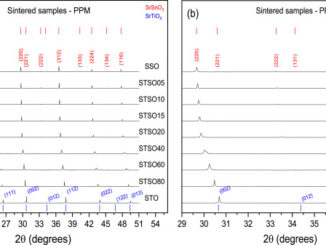
Combined theoretical and nanoscale experimental study of Pb(Ca,Ba)TiO3, Pb(Sr,Ba)TiO3, and Pb(Sr,Ca)TiO3complex perovskite structures: An investigation of the ferroelectric and electronic properties
Abstract: Combined experimental and first-principles studies have been conducted to obtain a fundamental understanding of the effect of A-site chemical doping on the electronic structure and ferroelectric behavior of Pb(Ca,Ba)TiO3, Pb(Sr,Ba)TiO3, and Pb(Sr,Ca)TiO3 perovskite complex solid solutions. Rietveld refinement of powder X-ray diffraction data shows that the crystal structure of all the three compounds is distorted from the ideal cubic perovskite structure. At the nanoscale, piezoresponse force microscopy (PFM) studies show low-performance ferroelectric properties of Pb(Sr,Ca)TiO3 thin films when compared to Pb(Ca,Ba)TiO3 and Pb(Sr,Ba)TiO3 films. Theoretical analysis of the electronic band structure performed on the basis of density functional theory (DFT) allows to elucidate the origin of the different ferroelectric behaviors observed in Pb(Ca,Ba)TiO3, Pb(Sr,Ba)TiO3, and Pb(Sr,Ca)TiO3 thin films. DFT-based computational calculations reveal that there is a strong correlation between the effects of Ti 3d non-bonding orbitals (responsible for π Ti


Authors: D. S. L. Pontes, W. B. Bastos, A. J. Chiquito, E. Longo & F. M. Pontes.
Journal of Alloys and Compounds
Volume 702, 25 April 2017, Pages 327-337
DOI: https://doi.org/10.1016/j.jallcom.2017.01.250




